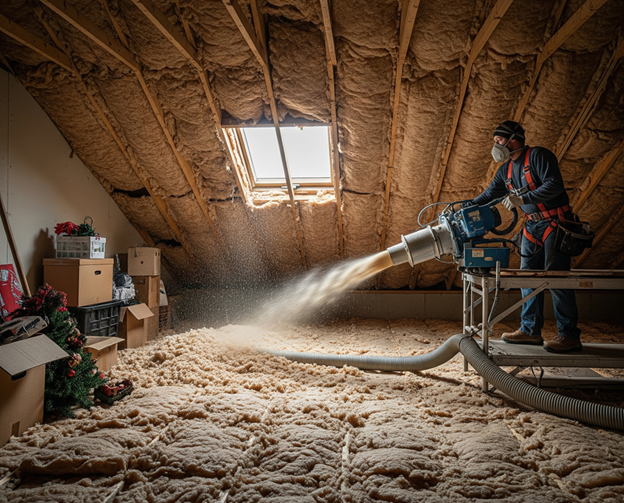A Homeowner’s Guide to Blown-In and Loose Fill Insulation

When it comes to keeping your home energy-efficient and comfortable throughout the year, insulation plays a crucial role. Among the many types of insulation available today, blown-in insulation, also known as loose-fill insulation, stands out for its affordability, flexibility, and impressive performance.
If you’re considering upgrading your home’s insulation or need to top up what you already have, here’s what you should know about this popular option.
What Is Blown-In Insulation?
It refers to small, loose particles of insulating material, typically made from cellulose, fiberglass, or mineral wool, that are blown into place using specialized equipment. It’s a preferred method for insulating attics, wall cavities, crawl spaces, and other hard-to-reach areas.
Because it fills gaps and voids more effectively than traditional batt insulation, blown-in insulation is excellent for improving a home’s overall thermal performance.
Benefits of Blown-In (Loose Fill) Insulation
1. Energy Efficiency
By filling gaps and air leaks, this method reduces heat loss in the winter and heat gain in the summer. This helps lower your heating and cooling costs and makes your home more energy-efficient year-round.
2. Quick and Easy Installation
This method can typically be installed in just a few hours. Professional installers use a machine to distribute the material evenly across the desired space, making it especially suitable for retrofitting older homes without major demolition.
3. Excellent Coverage
Unlike rigid insulation boards or batts, this method easily fills around pipes, wiring, and irregularly shaped spaces, ensuring no cold or hot spots remain.
4. Sound Dampening
In addition to thermal insulation, blown-in materials offer soundproofing benefits by reducing noise transmission between rooms and from the outdoors.
5. Environmentally Friendly Options
Many products, especially cellulose types, are made from recycled materials like newspapers, making them a sustainable choice for eco-conscious homeowners.
Where Is Blown-In Insulation Best Used?
- Attics
- Wall cavities
- Crawl spaces
- Cathedral ceilings
- Around plumbing and electrical fixtures
Its versatility makes it an ideal option for both new builds and older homes in need of an upgrade.
Final Thoughts
Blown-in insulation is an efficient, cost-effective way to improve your home’s energy performance, comfort, and even resale value. Its ability to fill hard-to-reach areas and reduce utility bills makes it a smart investment for homeowners looking to enhance their property.
Thinking about upgrading your home’s insulation? Contact our local insulation specialist today to learn how blown-in insulation can make a difference in your home.
